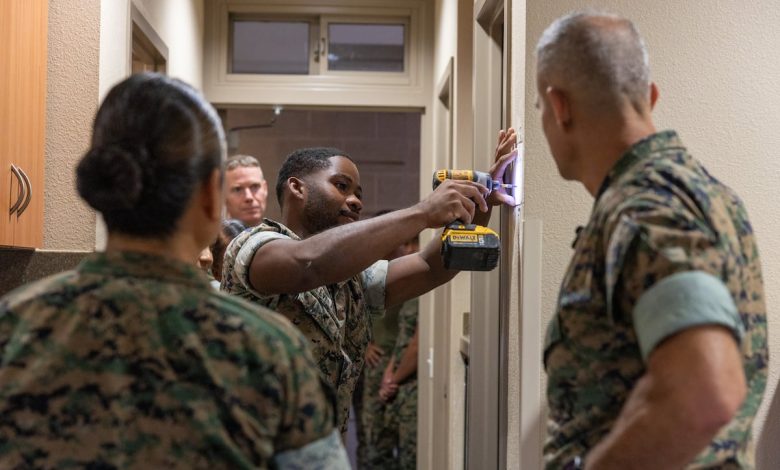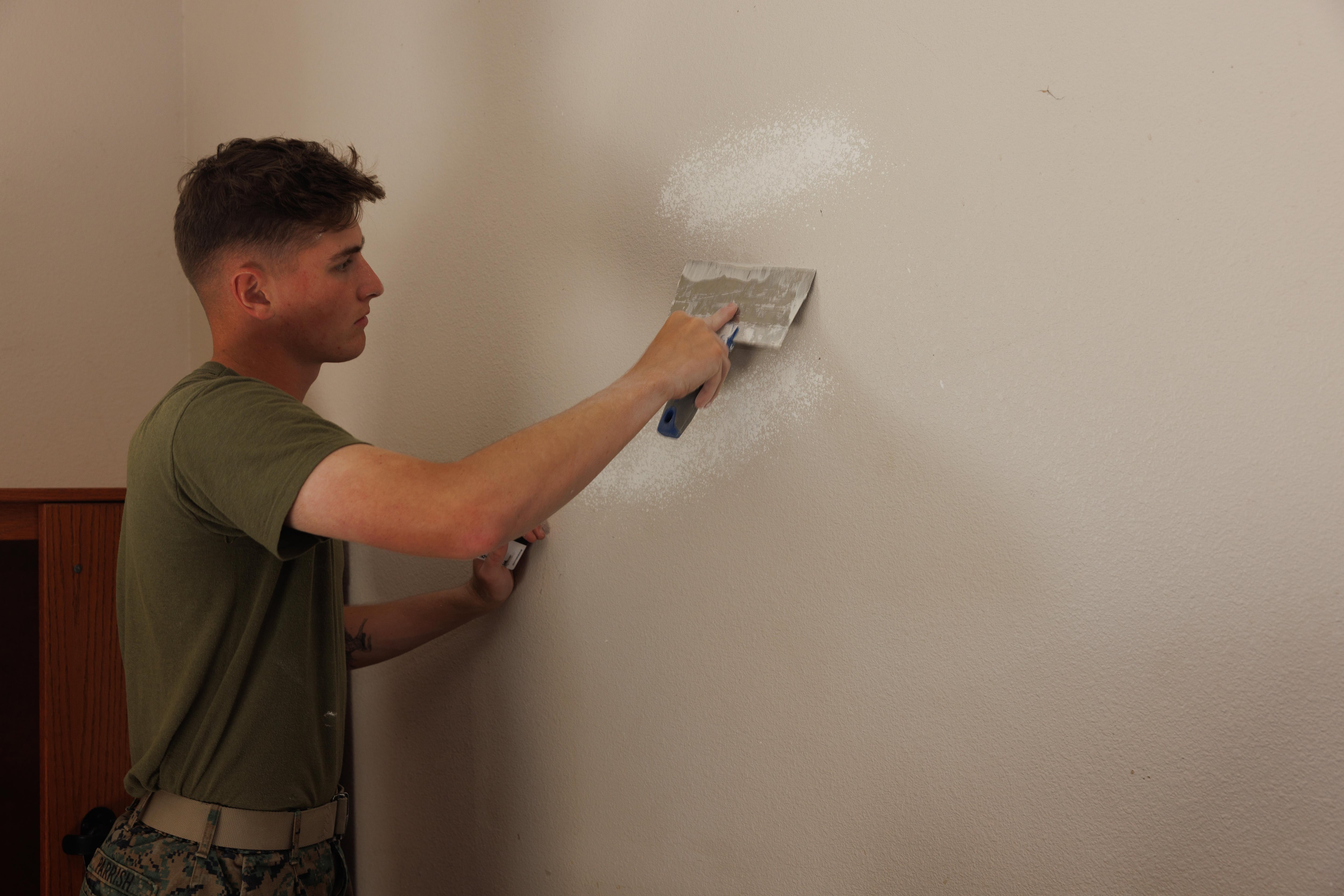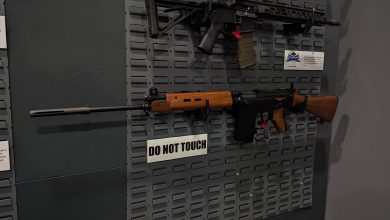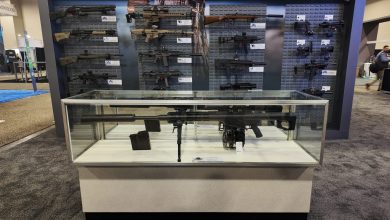Marines tackle barracks repairs with elbow grease, outside expertise

Marines at Camp Pendleton, California, are pairing up with building maintenance experts to tackle barracks repairs as part of a two-week standdown to address unaccompanied housing issues across the base.
Called “Operation Clean Sweep,” the event, which began Oct. 16 and runs until Oct. 30, is an early step in the Corps’ long-term effort to repair, restore and build out better housing for Leathernecks and their families force-wide, according to a Marine Corps release.
Deferred maintenance and funding shortfalls have plagued Marine housing for decades, leading to “wall-to-wall” inspections of the Corps’ more than 60,000 barracks rooms earlier this year along with Marine Corps Commandant Gen. Eric Smith’s launch of a barracks overhaul initiative dubbed Barracks 2030.
RELATED
As part of the overall initiative, the Corps will consolidate Marines in the better buildings and demolish the worse ones, hire professional barracks managers and increase funding for barracks restoration.
Assistant Commandant Gen. Christopher Mahoney previously said those inspections were the “baseline” for understanding where the Corps should focus its efforts.
“None of this is going to happen overnight,” Mahoney said. “But this inspection is one of many first steps.”
One of the next steps is the “Barracks 360 Reset,” which covers the clean sweep at Pendleton. It seeks to address some of the low-hanging fixes by pairing experts in areas such as drywall repair, window screen replacement and air conditioning installation with Marine staff at the West Coast base to identify and make these minor repairs.
The I Marine Expeditionary Force and Marine Corps Installations-West are investing nearly $4.2 million in housing maintenance and repairs.
More than half of that funding, or $2.2 million, was spent for a “surge” to address backlogged maintenance requests, according to the statement. The remaining dollars were spent on air-condition units to be delivered in the coming months.
In addition to the spending and repairs, the Corps has identified housing rights and responsibilities and minimum acceptable standards for barracks rooms in a “resident’s guide.”
Staff at Pendleton held town hall meetings ahead of “Operation Clean Sweep” to educate residents on barracks upkeep and available resources.
Navy Seabees will work with Marines and sailors on self-help projects such as minor room repairs, according to the release. The Corps hired contracted civilian labor to reduce the maintenance backlog on the installation.
In a separate effort aimed at improving barracks conditions, the Corps launched the QSRMax system in July that allows Marines to submit maintenance requests to USMCMax through a QR code on their phone. QSRMax then routes the request to barracks and building managers on the base, Marine Corps Times previously reported.
Marine housing has deteriorated as the Corps prioritized spending on weapons and training over the past two decades during the wars in Iraq and Afghanistan.
A 2023 Government Accountability Office report found “mold, dysfunctional plumbing, and poor heating and cooling” in Marine barracks.
An estimated 87,000 Marines live in barracks, Maj. Gen. David Maxwell, head of Marine Corps Installations Command, wrote in a February Marine Corps Gazette article.

Maxwell noted that 17% of the Corps’ 658 barracks buildings were listed as in “poor or failing condition.”
As of March, an estimated 17,000 Marines, or 20%, live in barracks that fell short of military standards regarding privacy and room configuration, according to the GAO report.
The Corps’ “wall-to-wall” inspections conducted earlier this year found half of all barracks rooms were “partially mission capable,” which means the rooms were deficient in at least one of the regulated living standards, Marine Corps Times previously reported.
At the annual Modern Day Marine conference in May, Smith addressed the decades-long shortfalls.
“So, again, I can’t apologize for previous generations of Marines to prioritize training and equipping over quality of life,” he said. “But now the tide has to turn, and we have to get back to quality of life.”
In recent years, the Corps has spent an average of about $200 million annually on barracks maintenance.
The Corps requested $274 million in its fiscal 2025 budget to address barracks conditions, a $65 million increase over fiscal 2024. The service’s requested total fiscal 2025 budget is $53.7 billion.
However, according to an internal memo obtained by Marine Corps Times in January, the service estimates it will need about $1.5 billion each year to bring all its barracks up to “good/fair” condition.
The Corps’ deferred maintenance amounts to more than $15.8 billion, according to Navy budget documents.
But catching up requires smart strategies for the money the Corps does have.
“The Marine Corps cannot overcompensate with significant sums of money that cannot be spent smartly and risk investing in the wrong initiatives because it must spend money now,” Maxwell wrote in the Marine Corps Gazette article.
Todd South has written about crime, courts, government and the military for multiple publications since 2004 and was named a 2014 Pulitzer finalist for a co-written project on witness intimidation. Todd is a Marine veteran of the Iraq War.
Read the full article here






